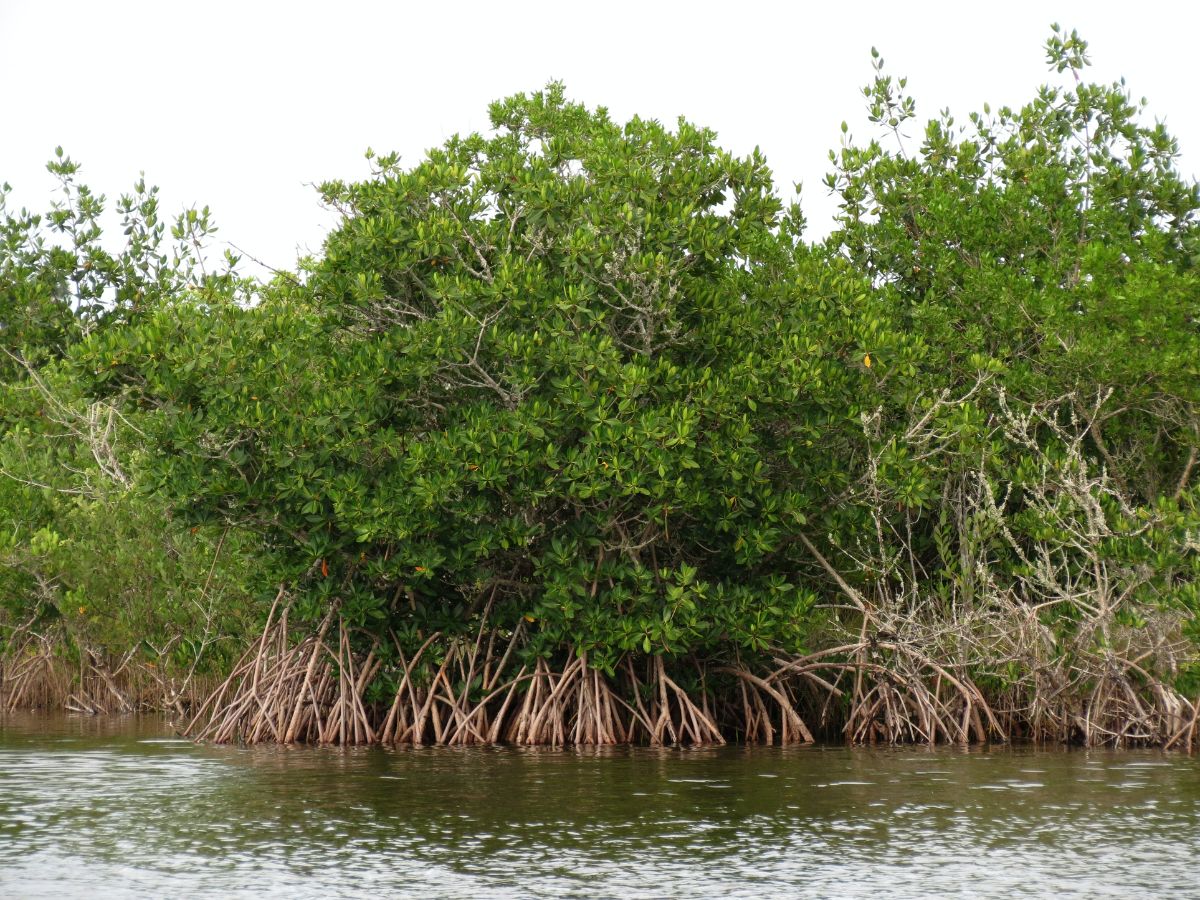Mangroves and the cost of flooding
Coastal flood risks are rising rapidly. A new study provides, for the first time, a global analysis of the social and economic value of mangroves for flood risk reduction in critical coastal hotspots around the world.
Mangroves provide over $65 billion per year in flood protection benefits. If lost to climate change or coastal development, 15 million more people could be flooded annually across the world.
"Mangroves provide incredibly effective natural defenses, reducing flood risk and damages," Pelayo Menéndez, a postdoctoral fellow in the Institute of Marine Sciences at UC Santa Cruz and first author of the paper, said.

Red mangroves along a river bank.
Creative Commons
Mangrove forests occur in more than 100 countries globally, but many mangroves have been lost to aquaculture, agriculture and coastal development. Globally, mangroves have declined from about 54,000 square miles in 2000 to approximately 51,000 square miles in 2014, with even greater losses before 2000. Meanwhile, climate change is increasing sea levels and the intensity of hurricanes. Quantifying and communicating the value of mangroves as natural coastal defenses is crucial for enacting conservation and restoration efforts that can save lives and protect nature.
The researchers provided estimates of the economic value of mangrove forests for flood risk reduction, analyzing every approximately 12 miles (20 km) across more than 435,000 (700,000 km) coastal miles worldwide. Mangroves provide many of these 12-mile stretches, particularly those near cities, with more than $250 million annually in flood protection benefits.
"We have combined rigorous tools from engineering and economics to show that mangroves really work for flood risk reduction," said coauthor Íñigo Losada, chief scientist at IH Cantabria.
Though mangrove forests have been declining globally, they can be easily restored to make people and property safer. Successful projects across Vietnam, Philippines, and Guyana have restored more than 247,000 acres of mangroves.
.jpg)
Mangrove planted by locals in Durduri, Somalia.
Creative Commons
By identifying the places where mangroves provide the greatest flood reduction benefits, governments can build new policies for adaptation, sustainable development, and environmental restoration.
"Now that we can value these flood protection benefits, it opens all kinds of new opportunities to fund mangrove conservation and restoration with savings for insurance premiums, storm rebuilding, climate adaptation, and community development," said coauthor Michael Beck, research professor in the Institute of Marine Sciences at UC Santa Cruz.

.png?auto=compress%2Cformat&w=200)

